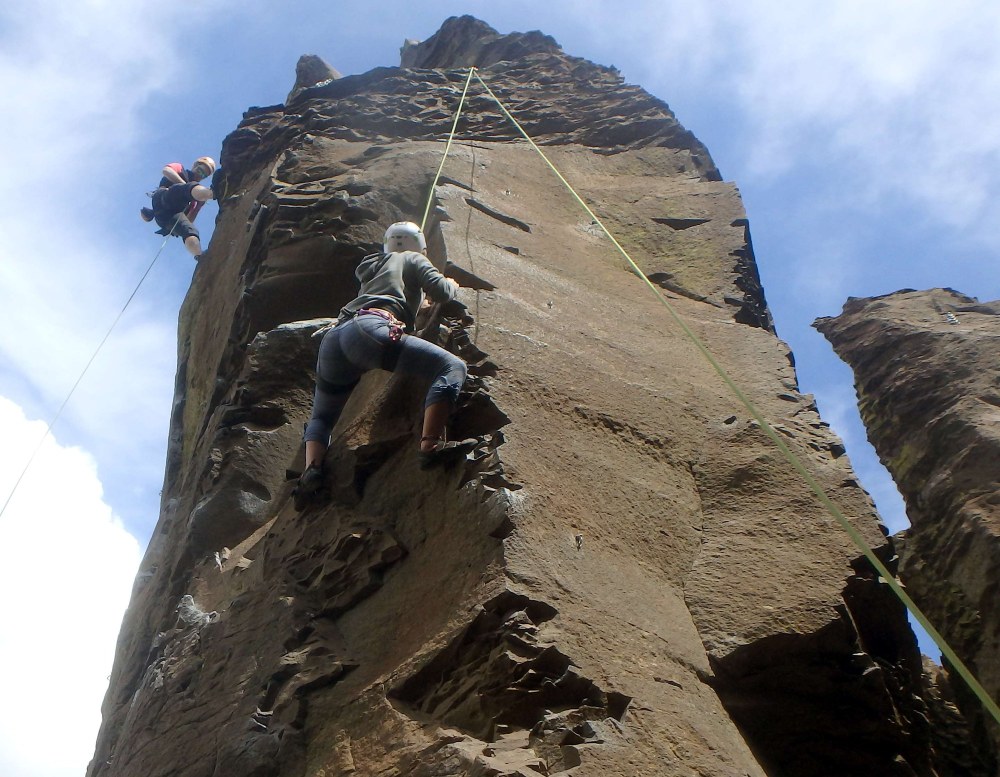
The Feathers, Vantage - 13 May
Leader Incident Report
Leader
While we were climbing on the south side of the Feathers, one of our Mountaineers Adventure Club (MAC) instructors noticed that the party climbing next to us had a strange anchor set up for their toprope. On closer look, we realized that their anchor was a non-locking carabiner at the end of each chain, with single webbing loop going through both non-locking carabiners, and the rope was running directly through the webbing loop.
After a bit of consideration, and pointing this situation out to some of our MAC leadership kids, our instructor decided to chat with the other party. He explained that the rope will melt through the webbing and he would highly recommend having a piece of hardware in between webbing and rope.
When one of the other party members got to the top, he cleaned the anchor and commented that yes, our instructor was right - it was beginning to melt through the webbing.
Back at camp that evening, we shared the story with the entire MAC group - an opportunity to teach about assessing anchors, and how to respectfully help other parties without sounding like a know-it-all. At that point, one of our youth said, "Oh my gosh! I climbed on their rope. They were so nice and they seemed like they knew what they were doing!"
We then discussed the need to assess other parties' systems and ensure that a MAC leader has signed off on the system before any of us go climbing on their rope.
Lessons Learned
We generally try to role-model camaraderie as part of our crag ethic. We pull ropes when not in use, we offer other parties to use our rope if we're climbing in the same area, and we encourage sharing ropes to create a positive climbing environment.
The lesson here is that kids (and people in general) don't know what they don't know. This could have been avoided if we had been clear and specific that we only share ropes with parties whose skill and systems have been assessed by one of our staff or volunteer leaders.
This story ended well with no one getting hurt, and great teaching moments for all involved, including the other climbing party. But had it not ended well, it could have been hugely traumatic for everyone. Evidence that reporting and learning from near misses needs to be a critical part of our risk management practices.
 David Shema
David Shema